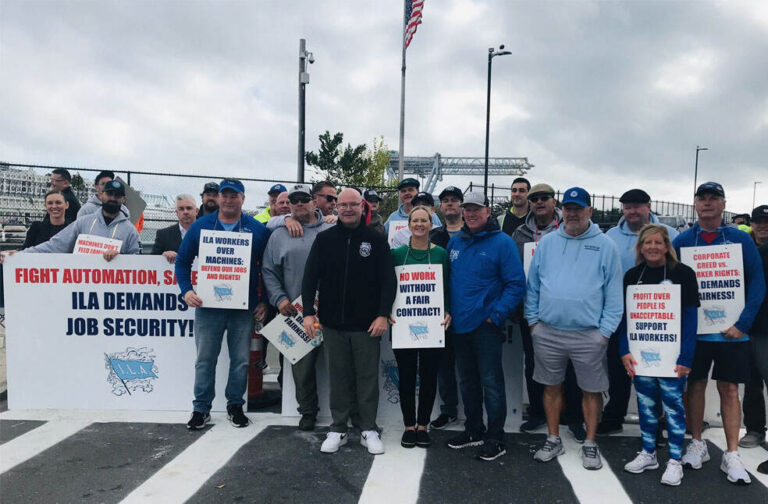New York: US dockworkers and port operators has informed that they have reached a tentative wage agreement, bringing an end to a three-day strike that had halted shipping operations on the US East and Gulf coasts.
Although specific terms of the agreement were not disclosed, the strike’s resolution is expected to prevent what could have been billions of dollars in potential losses.
The two parties agreed to extend their master contract until January 15 of the following year, allowing them ‘to return to the bargaining table’ to address remaining unresolved issues.
The joint statement declared that, “Effective immediately, all current job actions will cease, and all work under the Master Contract will resume.”
The tentative agreement would probably grant workers a wage increase of approximately 62% over six years. The union had initially sought a 77% raise, while the employers had previously offered nearly 50%.
US President Joe Biden welcomed the agreement and said in a statement that, this is a “critical progress towards a strong contract. I congratulate the dockworkers from the ILA, who deserve a strong contract after sacrificing so much to keep our ports open during the (COVID-19) pandemic.”
I applaud the International Longshoremen’s Association and the United States Maritime Alliance for coming together to reopen the East Coast and Gulf ports and ensure the availability of critical supplies for Hurricane Helene recovery and rebuilding.
Collective bargaining works.
— President Biden (@POTUS) October 4, 2024
Biden also added that, “I applaud the port operators and carriers who are members of the US Maritime Alliance for working hard and putting a strong offer on the table.”
The strike began on 1st of October when 45,000 port workers walked off the job following the expiration of their contract. The dispute focused on wages and the automation of tasks at ports spanning from Maine to Texas.
The strike occurred at a critical point during the holiday shopping season, affecting 36 ports that manage roughly half of the cargo entering and leaving the US. Had it continued for more than a few weeks, it could have posed significant risks of product shortages during this key retail period.
At least 45 container ships were anchored outside strike-affected ports along the US East and Gulf coasts, a significant increase from just three before the strike began.
The resolution is a key moment for the US labor movement, highlighting ongoing discussions around workers’ rights and fair compensation in essential industries.



